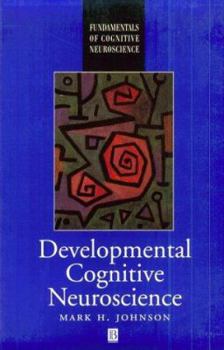Developmental Cognitive Neuroscience: An Introduction
Select Format
Select Condition 
Book Overview
The third edition of Developmental Cognitive Neuroscience presents a thorough updating and enhancement of the classic text that introduced the rapidly expanding field of developmental cognitive... This description may be from another edition of this product.
Format:Paperback
Language:English
ISBN:0631202013
ISBN13:9780631202011
Release Date:February 1997
Publisher:Wiley-Blackwell
Length:234 Pages
Weight:0.90 lbs.
Dimensions:0.7" x 6.5" x 9.0"
Customer Reviews
4 ratings
review on developmental cognitie neuroscience
Published by Thriftbooks.com User , 17 years ago
nice book with clear introdution about the theories and reseach findings on the development of neurological systems and it relation with the development of other aspects.
no mirror neurons?
Published by Thriftbooks.com User , 17 years ago
Johnson writes at a technical level probably well suited for an undergraduate reader in biology. It is at a higher level than a popular-type book aimed at a mass audience. There is a good discussion of the development of the neural networks and the internal structures of the brain. Vision is given an entire chapter because of its importance to the organism. Also, the visual structures of the eyes are usefully understood as a direct pipeline into the brain, or, equivalently, as a simple extension of the brain. Higher level processing is described in the case of social interactions and speech processing. No mention of mirror neurons. Perhaps these are not seen as significant for the infant's development?
Halfway between popular science and textbook: an ideal introduction
Published by Thriftbooks.com User , 17 years ago
In a few places throughout the second edition of his landmark book, Mark Johnson suggests that the field of developmental cognitive neuroscience has matured from infancy to toddlerhood. This book, then, is a sort of biography, from the field's theoretical ancestry in 17th century debates between "vitalists" and "preformationalists" to current (and in some ways similar) debates between nativists and empiricists. In between, Johnson expertly covers everything from prenatal cortical differentiation to developmental change in the distributions of various neuromodulators, to the development of simple oculomotor function, to prefrontal processes supporting object permanence. Johnson draws from genetic, neuroimaging and behavioral research, postmortem analysis of developing human brains, various neural network models, and even in vitro experiments with a variety of brain tissues. Along the way, Johnson analyzes how each aspect of functional brain development can be accounted for by three basic views. One, which he terms the "maturational" view, supposes that brain development is largely pre-determined by genes, and further that these neural changes can be directly related to cognitive change. A second contrasting view, which Johnson terms the "skill learning" view, supposes that the mechanisms guiding cognitive development are similar or identical to those guiding skill acquisition in adults. Finally, a third view - which Johnson calls "interactive specialization" - represents a fusion of the previous two perspectives. According to this perspective, broad patterns of connectivity are innately specified, but the ultimate computations supported by brain regions rely on an interaction between maturational processes and neural activity resulting from experience throughout a variety of neural networks. Although this tripartite framework necessarily simplifies the theoretical debates surrounding each topic, it has many advantages as a rhetorical device. For example, the tone of the book is noticeably more conversational than the didactic quality of other textbooks which avoid controversial issues altogether (or perhaps worse, present just a single interpretation as fact). Secondly, this framework gives the book a strong coherence, despite the wide variety of methodologies, levels of analysis, and topics reviewed throughout. This leads to a polished work equally suited to the graduate classroom as to the libraries of interested laypeople. In general, the book is skewed towards infancy; accordingly, the visual system is covered in detail while much less space is allocated to the development of higher-level cognition and explicit memory. On the other hand, Johnson's treatment of early social cognition is particularly impressive and wide-ranging, covering topics from parental "imprinting" in chicks to the development of face recognition, gaze-tracking, and ultimately theory of mind. Johnson notes that an introductory text such as this is necessarily selective,
Introducing a new field in style
Published by Thriftbooks.com User , 23 years ago
This is the first introductory textbook on the emerging field of developmental cognitive neuroscience, and one that sets high standards. Professor Johnson provides a clear and comprehensive overview of the essential mechanisms of the development of brain, behavior and cognition. Developmental cognitive neuroscience is a relatively new field of research, and Johnson has been one of its pioneers. The book deals not only with research on human infant development, but also deals with early learning and development in animals. This book is required reading for advanced undergraduates and postgraduates, and it is an excellent guide for researchers and teachers in this field. I will certainly want to use it for courses in developmental cognitive neuroscience.





